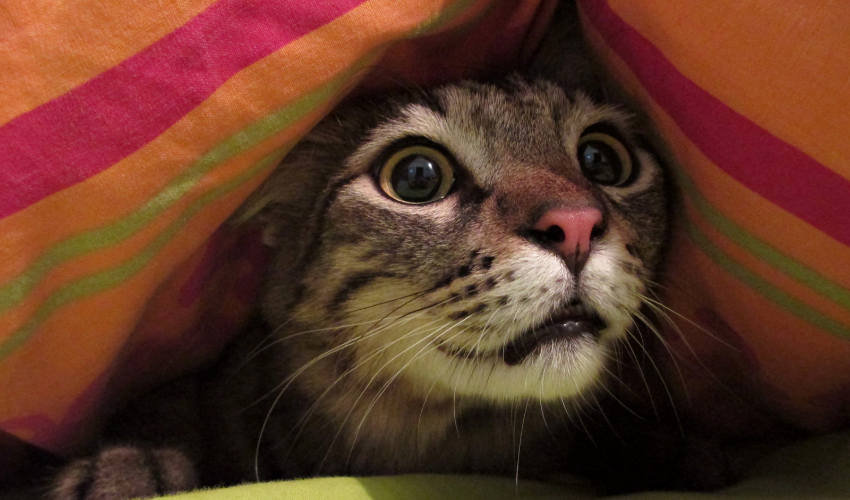10 Facts About the Feline Distemper Virus
 Feline Distemper is a highly contagious, potentially fatal viral disease in cats. It can affect any cat, but kittens and unvaccinated young cats are more likely to become infected. In some cases, though, even vaccinated cats contract the Feline Distemper Virus. That’s because most vaccines can’t guarantee 100% protection. So, whether or not your cat is vaccinated, it’s important to be equipped with adequate information about Feline Distemper. The more you know about it, the easier it’ll be for you to prevent infection. To help get you started, here are 10 facts about the Feline Distemper Virus!
Feline Distemper is a highly contagious, potentially fatal viral disease in cats. It can affect any cat, but kittens and unvaccinated young cats are more likely to become infected. In some cases, though, even vaccinated cats contract the Feline Distemper Virus. That’s because most vaccines can’t guarantee 100% protection. So, whether or not your cat is vaccinated, it’s important to be equipped with adequate information about Feline Distemper. The more you know about it, the easier it’ll be for you to prevent infection. To help get you started, here are 10 facts about the Feline Distemper Virus!
1. It’s resistant to regular household cleaners
Just like the Canine Parvovirus, the Feline Distemper Virus is tough and very difficult to get rid of. It can persist in the environment for long periods and is incredibly resistant to most household disinfectants. To effectively kill the virus, it’s best to use a mixture of water and bleach at a 1:32 dilution when cleaning potentially contaminated surfaces.
2. It can survive for up to 1 year without a host
Given that the Feline Distemper virus is extraordinarily hardy, it can survive without a host for several months up to a year—sometimes even longer—waiting for an unsuspecting cat to infect. They normally stick to fomites, which are objects, materials, or instruments that can carry infection, like clothes, carriers, rugs, and furniture.
3. Humans are the main cause of the spread of Feline Distemper
Yep! Although it’s not possible for us humans to contract the Feline Distemper Virus, we’re actually considered the main culprit of the spread of the viral disease. The simple act of not washing our hands after touching animals or handling equipment that may have been contaminated makes easily moves the virus from one animal or location to another.
4. Cats gain lifetime immunity when they recover from Feline Distemper
When a cat becomes infected, the journey to recovery may very well be a long and tiring one. However, once they overcome the illness, they’re rewarded with life-long immunity to the disease.
5. Feline Distemper doesn’t have a cure
Just like Parvo in dogs, Feline Distemper has no specific cure. As of today, the only thing that can help infected cats recover from the viral disease is supportive care. This includes intravenous fluids to prevent dehydration and elevate electrolyte levels, antibiotics to help the immune system fend off harmful pathogens and prevent secondary infections, anti-diarrheals to control diarrhea, and anti-emetics to prevent vomiting.
6. Once Feline Distemper has progressed, it’s almost always fatal
If Feline Distemper is caught and treated early, then it’s highly likely that a cat will make a full recover. However, if the disease has already progressed and the clinical signs are have become severe, there’s very little chance that a cat will survive—especially the young ones. In fact, without timely treatment, it’s estimated that mortality rates are 100% in younger cats.
7. Pregnant cats with Distemper can pass the infection to their offspring in utero
If a pregnant cat contracts the Feline Distemper Virus, she can pass it on to her offspring while they’re still inside her uterus. It’s unlikely that kittens would survive the infection, but even if they do, they’ll most likely end up developing feline ataxia, commonly known as wobbly cat sydrome—a neurological condition that results in loss of balance.
8. Some infected cats may show no signs of illness, but continue spreading the viral disease
There have been cases where cats that appeared clinically healthy tested positive for Feline Distemper. These cats showed absolutely no clinical signs of infection, but were able to shed the virus through their feces for a long period of time.
9. It can take less than a day for the Feline Distemper Virus to spread throughout the entire body
Once the Feline Distemper Virus enters a cat’s body, it can spread and cause severe organ damage within 24 hours or less. It attacks the lymphoid tissues, bone marrow, and the lining of the small intestine. Without immediate veterinary care, infected cats can die in a matter of hours.
10. The Canine Parvovirus is believed to have evolved from the virus that causes Feline Distemper
The Canine Parvovirus, specifically the CPV-2 strain, was discovered in the year 1978. It was found to cause a disease that resembled Feline Distemper or Panleukopenia, which is also caused by a type of parvovirus. After closely examining the two, scientists saw that there were very few differences in their DNA structures. As a result, they assumed that the Canine Parvovirus mutated and evolved from the Feline Parvovirus, the causative agent of Feline Distemper.











